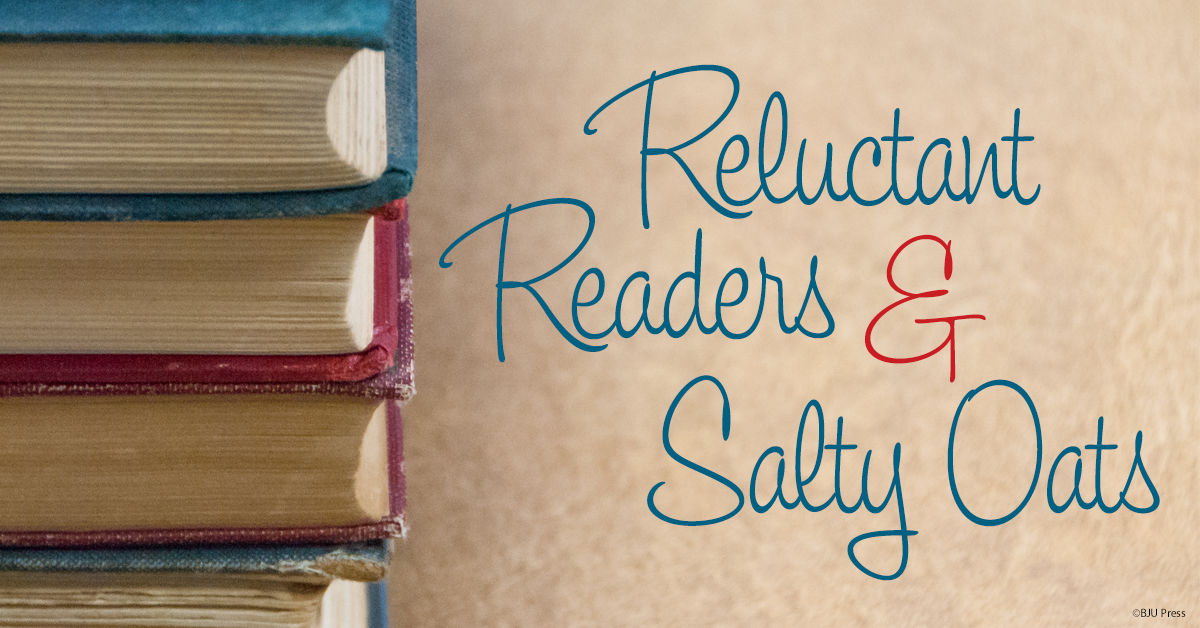
An important part of teaching your child to read includes developing oral reading skills.
Mrs. Walker, who teaches reading for BJU Press Homeschool, has created more online videos to help demonstrate the value—and fun—of reading out loud! Here they are with a summary to introduce each one. I’d encourage you to watch them all and find out more about the importance of oral reading.
When Is Oral Reading Important?
The blog recently focused on silent reading as a valuable skill. The videos linked there show how silent reading helps your student focus and fully understand what he’s reading. But what about reading things out loud? Why is that important? And when’s the best time to do it?
While silent reading will help your student form his comprehensive skills, oral reading will help develop his communication skills. Reading a piece out loud will help your student take what he’s just learned and communicate that to someone else. It’s been said that the best way to learn something is to teach it to someone else. Having your child read aloud will not only help him communicate, it will also make sure he understands what he’s reading!
Save oral reading until after your student has read at least once silently. That way, he has already had time to engage with and process the material. Then he can work through sharing that information with others.
How Do I Grade Oral Reading?
As your student begins reading aloud, you’ll want to grade and record his reading. Tracking his progress helps you determine what areas he might need a little more help with. BJU Press has provided multiple oral reading assessments to help with this—along with specific things to listen for as your child is reading.
Again, we recommend you let your child read the material silently first. You may even want to ask him a few questions to make sure he fully understands what he’s reading.
When he’s ready, listen for the criteria listed on the rubric. Be sure to rate each item honestly but fairly, and give your child positive comments on the things he does well. Oral reading is a difficult skill that requires speaking, pronouncing, and communicating the author’s meaning. He has to do these things all at the same time, so be sure to work through the reading with your child lovingly and patiently.
Why Is Poetry for the Ears?
Poetry is a form of writing that is well-suited for reading aloud. It’s a creative means of communicating information in a way that’s more memorable, more pleasant to listen to, and potentially simpler to understand. Many familiar songs are poems that express important truths in ways that stick with us and compel us to look at those truths in new and fresh ways.
Even though poetry is not a heavy component of BJU Press curriculum, we include it because we believe it’s important. Your child will likely encounter it regularly as he gets older. Large portions of Scripture are poetry, and we want students to be able to understand it and glean truth from it.
How Do We Perform Dramas at Home?
One more genre that’s meant to be both read and heard is theater! Performing dramas at home is a fun way to teach your student many important skills that he will use for the rest of his life. Public speaking, job interviews, and singing in a choir are all opportunities that doing theater at home will prepare him for.
Theater can also teach your child empathy. As he gets ready to be in a play, he’ll have to learn his lines, create a character, and explore why the character made the decisions he did. Being able to understand a fictional character’s motives will help your student interact with others.
You may also want to have your student go off-script and put things in his own words—which will demonstrate whether your child really understands everything that he’s performing!
We hope these videos have made it clear why reading things out loud is such an important life skill for your student. The more he is able to both understand and communicate what he reads, the more prepared he will be for communicating effectively in whatever positions God is preparing him for.
• • • • •
Matt recently graduated with an MA in communication studies and currently works as a freelance writer. He attributes the wild variety in his current opportunities to the exploration his parents gave him through the homeschooling experience. He enjoys theater, the gym, and choral music and will rarely say no to a cold glass of sweet tea.


